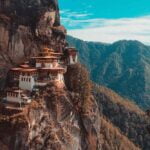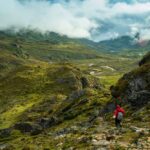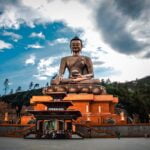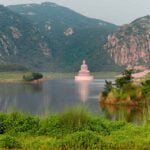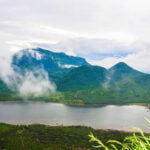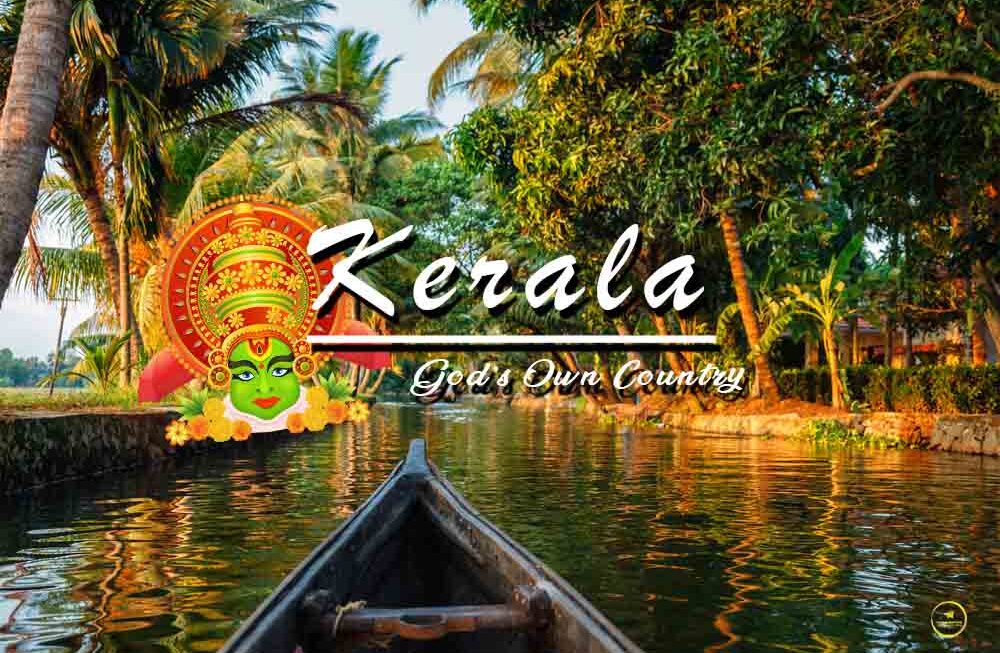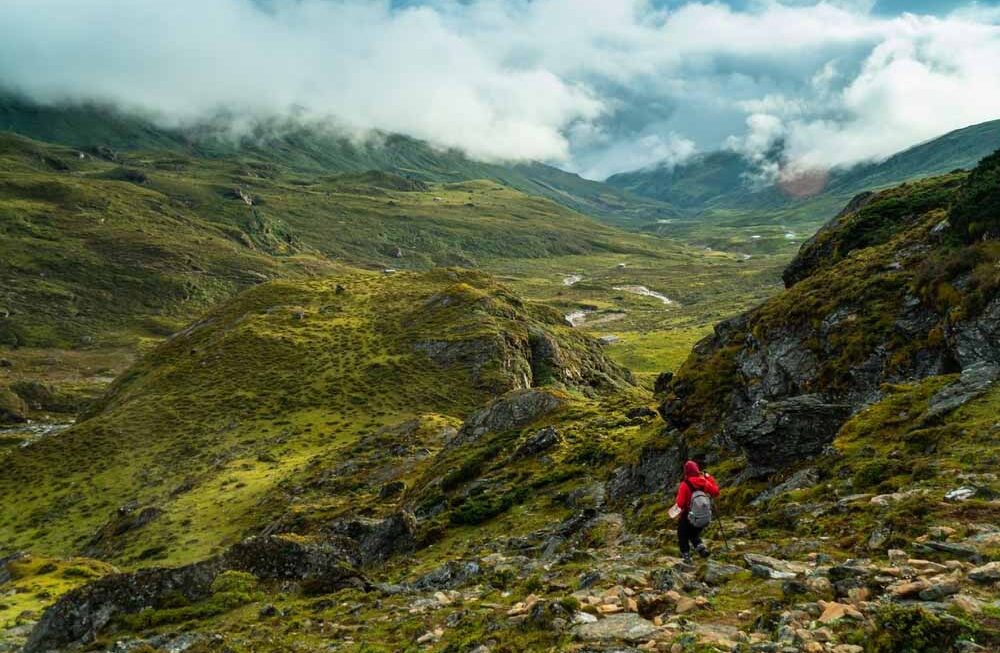Are you an adventurer or a nature lover seeking the perfect place to visit? Consider Sikkim, a small but stunningly beautiful state in northern India. Sikkim, nestled in the Himalayas, offers a broad choice of experiences for every traveler. Sikkim has it all, from towering mountains and tranquil lakes to bustling monasteries and unique wildlife. In this article, we will take you on a visual tour of the best tourist places in Sikkim that will captivate your senses.
Outline of the Article

Popular Tourist Places in Sikkim
1. Introduction: A Glimpse of Sikkim’s Natural Beauty
Sikkim, a lovely Himalayan state, is a sanctuary for nature lovers and adventure seekers. Sikkim has many tourist attractions, including gorgeous landscapes, quiet monasteries, and majestic mountains. Here are some of the most popular tourist attractions in Sikkim that you should not miss:
1.1: Gangtok: The Capital City
Gangtok, Sikkim’s main city, is a dynamic and bustling destination. It is well-known for its stunning vistas of the Kanchenjunga mountain range, vibrant monasteries, and bustling markets. Explore the Enchey Monastery, learn about Tibetan culture at the Namgyal Institute of Tibetology, and take a cable car trip for panoramic views of the city.
1.2: Pelling: Gateway to Kanchenjunga
Pelling is a small hamlet in West Sikkim that serves as the entry point to the magnificent Kanchenjunga Peak. The town has breathtaking views of the snow-capped peaks and serves as an excellent base for treks and climbs. For a peaceful experience amidst nature’s splendor, visit the Pemayangtse Monastery, Rabdentse Ruins, and Khecheopalri Lake.
1.3: Tsomgo Lake: A Mesmerizing Glacial Lake
Tsomgo Lake is a magnificent glacial lake in East Sikkim, located at an elevation of 3,753 meters. The turquoise waters of the lake create a mesmerizing scene against the backdrop of snow-covered mountains. During the winter, visitors can go on yak rides, have snowball battles, and observe the different flora and animals in the surrounding area.
1.4: Nathu La Pass: Connecting India and Tibet
The Nathu La Pass is a strategic mountain pass that connects Sikkim to China’s Tibet Autonomous Region. It is located at an elevation of 4,310 meters and provides stunning views of the Himalayas. Visitors can explore the past, see the Indo-China border trade, and feel the rush of being on one of the world’s highest motorable highways.
1.5: Yumthang Valley: The Valley of Flowers
Yumthang Valley, popularly known as the Valley of Flowers, is a nature lover’s heaven. The valley, located in North Sikkim, is embellished with colorful alpine flowers, rushing streams, and snow-capped hills. Visit during the spring season, when the valley is a bright carpet of rhododendrons and other wildflowers.
1.6: Rumtek Monastery: Seat of Tibetan Buddhism
Rumtek Monastery is an important Tibetan Buddhist holy site in Sikkim. It houses various valuable artifacts, murals, and religious scriptures. The monastery has a peaceful and spiritual atmosphere that draws both devotees and visitors. Witness the monks’ daily prayers and ceremonies and take in a peaceful environment.

1.7: Kanchenjunga Mountain: Majestic Himalayan Peak
Kanchenjunga, the world’s third-tallest peak, is a picturesque peak located on the boundary of Sikkim and Nepal. For the inhabitants, the mountain has enormous religious and cultural significance. Adventurers can go on difficult hikes to Kanchenjunga’s base camps, immersing themselves in the awe-inspiring majesty of the Himalayas.
2: Best Time to Visit Sikkim
Visiting Sikkim at the correct time is critical to making the most of your trip. Throughout the year, the weather and seasonal highlights change. Here are some things to think about when arranging your visit:
The significance of visiting at the correct time
Sikkim has four distinct seasons, each of which provides a unique experience. To fully appreciate the sights, understanding the weather conditions and planning is critical.
Ideal months for visiting Sikkim tourist places
The best months to visit Sikkim are from March to June and September to December. The temperature is comfortable during these times, and the sky is clear, allowing for superb visibility of the mountains and landscapes.
Weather conditions and seasonal highlights
Spring offers blooming flowers and pleasant weather, making it the perfect season for outdoor enthusiasts. Summer provides relief from the plains’ blazing heat with comfortable temperatures. Autumn delivers beautiful skies and breathtaking mountain views. Winter offers frigid temperatures, snowfall, and the opportunity to experience local winter events.
Tips for planning a trip based on the season
- Pack layers of clothing to accommodate shifting temperatures.
- During the monsoon and winter seasons, check the road conditions and accessibility.
- Plan ahead of time for accommodations and permits, especially during busy tourist seasons.
- Consult with local tour operators or guides for the most up-to-date weather and travel information.
3: How to Reach Sikkim
Sikkim has excellent air, road, and train connections to the rest of India. Here is a list of transport options for getting to Sikkim:
Overview of transportation options
- By Air: Bagdogra Airport in West Bengal is the closest airport to Sikkim. To go to Sikkim, take a taxi or a shared cab from the airport.
- By Road: Sikkim’s road network is well-maintained, and buses and taxis are available from surrounding cities such as Siliguri, Darjeeling, and Kolkata.
- By Rail: New Jalpaiguri (NJP) and Siliguri Junction are the nearest major railway stations to Sikkim. From these stations, take a cab or a shared taxi to Sikkim.
Getting to Sikkim by air, road, and rail
- By Air: From Bagdogra Airport, it takes around 4-5 hours by road to reach Gangtok, the capital city of Sikkim.
- By Road: The most popular route to Sikkim is through Siliguri, which has good connections to major towns. It takes about 4–5 hours to get from Siliguri to Gangtok.
- By Rail: New Jalpaiguri (NJP) is the nearest railway station to Sikkim. By road, it takes roughly 4-5 hours to reach Gangtok from NJP.
Details about local transportation within Sikkim
Local transport options in Sikkim include shared taxis, private cabs, and state-run buses. For short trips, shared taxis are a popular option, while private cabs provide greater convenience and flexibility. State-run buses connect major towns and tourist attractions, making interstate travel more affordable.
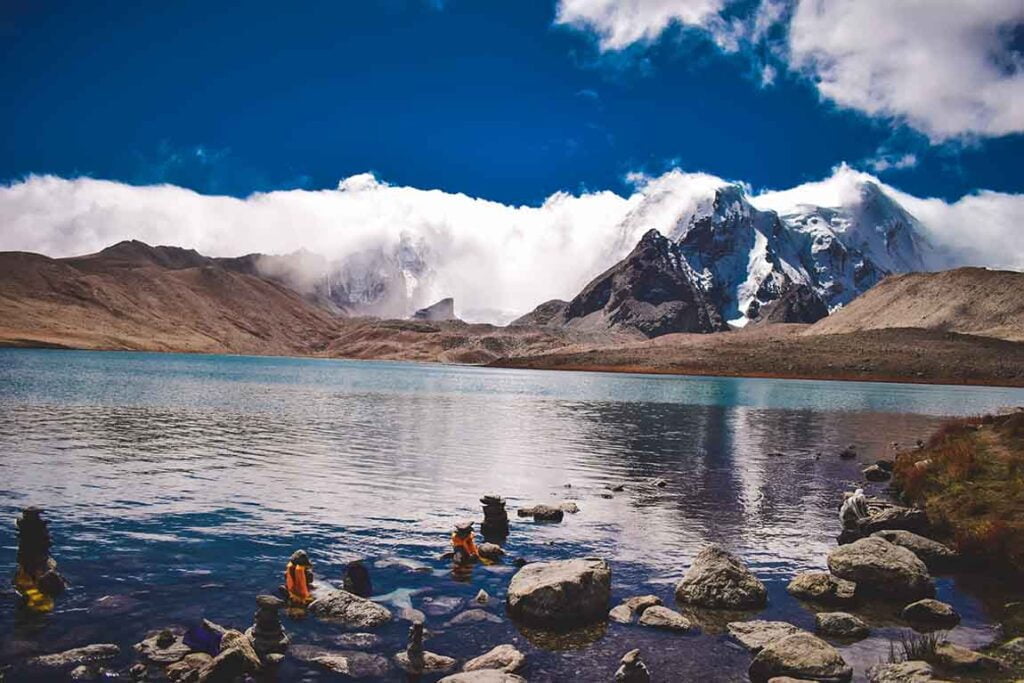
4: Adventure Activities in Sikkim’s Tourist Places
Sikkim is a sanctuary for adventure seekers, with many exhilarating activities available among its natural beauty. Here are some adventures to try when visiting Sikkim:
4.1: Introduction to adventure activities in Sikkim
Sikkim’s steep terrain and scenic scenery are ideal for adrenaline-pumping activities. There’s something for everyone, from trekking in the Himalayas to river rafting in raging rivers.
4.2: Trekking Options and popular trails
Some of the most stunning trekking trails in the Himalayas may be found in Sikkim. Trekking lovers will enjoy the Goecha La Trek, Kanchenjunga Base Camp Trek, and Dzongri Trek. These hikes will take you through beautiful valleys, deep forests, and spectacular mountain passes, with panoramic views of the surrounding landscapes.
4.3: River rafting and water sports opportunities
Sikkim’s Teesta and Rangeet rivers offer excellent river rafting options. The rushing waters and difficult rapids make it an amazing experience for thrill seekers. In addition, you can go kayaking, canoeing, and fishing on Sikkim’s rivers and lakes.
4.4: Paragliding and mountain biking experiences
Paragliding is a must-try activity for anyone looking for a bird’s-eye view of Sikkim’s magnificence. The picturesque landscapes and favorable wind conditions make it a perfect paragliding destination. Mountain biking is another exhilarating adventure activity that allows you to explore the rocky terrains and secluded paths of Sikkim while taking in the breathtaking natural surroundings.
4.5: Wildlife Safaris and nature exploration
Sikkim is home to diverse flora and animals, making it a naturalist’s dream. Visit the UNESCO World Heritage Site Khangchendzonga National Park to see the rich animals, including the rare snow leopard. Visit the Fambong Lho Wildlife Sanctuary and the Maenam Wildlife Sanctuary for a close-up look at Sikkim’s wildlife.
5: Offbeat Tourist Places in Sikkim
While renowned tourist destinations in Sikkim draw a large number of people, there are also hidden treasures that provide a more unconventional and tranquil experience. Here are some lesser-known places worth seeing:
5.1: Zuluk: The Silk Route Experience
Zuluk is a small settlement in East Sikkim on the old Silk Route. It provides stunning vistas of the snow-capped Himalayan peaks as well as insight into the region’s rich history. Explore the ancient trade route, stop by the Thambi Viewpoint for panoramic views, and take in the quiet serenity of the surrounding countryside.
5.2: Aritar: Tranquility by Lampokhri Lake
Aritar is a lovely resort surrounded by lush green trees and the tranquil Lampokhri Lake. It is ideal for nature enthusiasts and those seeking serenity. Boat on the picturesque lake, meander among the orange orchards, and learn about the local culture at the Aritar Gumpa monastery.
5.3: Rinchenpong: Serenity Amidst Hills
Rinchenpong is a charming hill station in West Sikkim famed for its peace and breathtaking Himalayan views. Take a stroll through the village, visit the Rinchenpong Monastery, and gaze out the viewpoint at sunrise and sunset.
5.4: Singhik: Panoramic Views of Kanchenjunga
Singhik is a small settlement famous for its spectacular views of the Kanchenjunga mountain range. It provides a peaceful respite from the hustle and bustle of metropolitan life. Enjoy the stunning sunrise and sunset views, as well as the Singhik Viewpoint and the surrounding countryside.
5.5: Teesta River: Rafting and Riverside Retreats
The Teesta River is not only a popular destination for adventurous activities, but it is also a beautiful setting for riverside retreats. Stay at cozy lodges set along the riverbanks, go river rafting, and relax in the tranquil atmosphere of the Teesta Valley.
6: Sikkim travel tips
To make the most of your visit to Sikkim, here are some helpful travel tips:
- Obtain the required permits: Certain sites in Sikkim require tourist permits. As required by law, obtain an Inner Line Permit (ILP) or a Protected Area Permit (PAP).
- Respect the local culture: Tibetan Buddhism has affected Sikkim’s rich cultural legacy. During your stay, respect the local customs, traditions, and religious places.
- Dress appropriately: The weather in Sikkim may be unpredictable, so bring layers of clothing to adjust to shifting temperatures. If going during the monsoon season, bring suitable walking shoes and rain gear.
- Stay hydrated: Drink plenty of water to stay hydrated, especially at higher elevations. Avoid drinking untreated water and bring a reusable water bottle with you.
Conclusion
Finally, Sikkim provides a treasure trove of tourist attractions and experiences for visitors seeking natural beauty, adventure, and peace. Sikkim has something for everyone, from major locations like Gangtok and Pelling to eccentric jewels like Zuluk and Aritar. Plan your journey carefully, immerse yourself in the breathtaking landscapes, and make unique memories in this enthralling Himalayan state.
Frequently Asked Questions (FAQs)
Q: Is a permit required to visit Sikkim?
- A: Yes, certain areas in Sikkim require permits for tourists. It is advisable to obtain the Inner Line Permit (ILP) or Protected Area Permit (PAP) as per the regulations.
Q: What is the best time to visit Sikkim?
- A: The best time to visit Sikkim is during the months of March to June and September to December. These periods offer pleasant weather and clear skies, providing excellent visibility of the mountains and landscapes.
Q: What adventure activities can I experience in Sikkim?
- A: Sikkim offers a range of adventure activities, including trekking, river rafting, paragliding, mountain biking, and wildlife safaris. Each activity provides a unique and thrilling experience amidst the natural wonders of Sikkim.
Q: Are there offbeat tourist places in Sikkim?
- A: Yes, apart from the popular tourist places, Sikkim is home to several offbeat destinations. Places like Zuluk, Aritar, Rinchenpong, Singhik, and the Teesta River offer a serene and lesser-explored experience.
Q: What travel tips should I keep in mind while visiting Sikkim?
- A: Some travel tips for visiting Sikkim include obtaining necessary permits, respecting the local culture, dressing appropriately for the weather, staying hydrated, and engaging with local guides for a deeper understanding of the region’s heritage and attractions.

